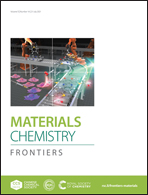A novel fluorous effect induced fluorescence sensor for Cu(ii) detection in the organic phase with high sensitivity†
Abstract
The detection of copper ions is rather important since they have undesired hazardous effects on the ecosystem and human health. Many methods have been developed for copper ion detection in the aqueous phase among which the direct detection of copper ions in the organic phase has been rarely reported. To overcome the disadvantage of the complicated sample pre-treatment involving the detection of copper ions in the organic phase, herein, we report a type of poly(vinylidene fluoride) based fluoropolymer (P(VDF–ATrFE)) as a novel fluorescence sensor for copper ion detection. A poly(vinylidene fluoride) based fluoropolymer (P(VDF–ATrFE)) can selectively bind to Cu2+ in the presence of an organic ligand, which is utilized to directly demonstrate the sensitive detection of Cu2+ in the organic phase. A rapid time response, excellent selectivity and highly efficient quantitative analysis of Cu2+ in the organic phase are obtained using P(VDF–ATrFE) as a fluorescent probe. This work provides a fast and convenient visual fluorescence detection method of Cu2+ in the organic phase.

- This article is part of the themed collection: Materials Chemistry in Xi’an Jiaotong University


 Please wait while we load your content...
Please wait while we load your content...